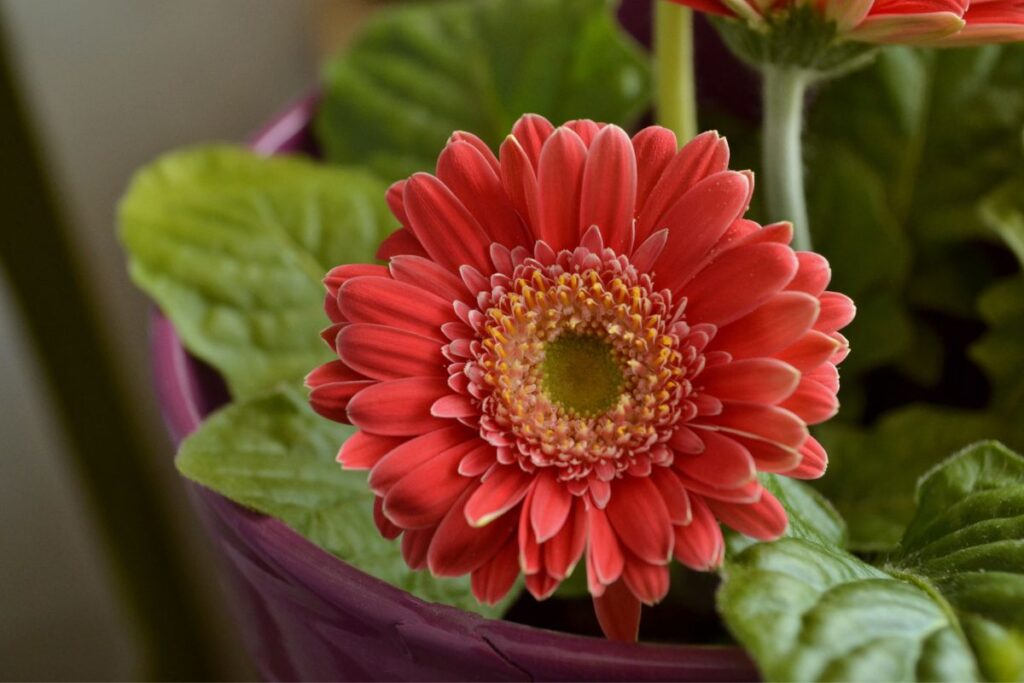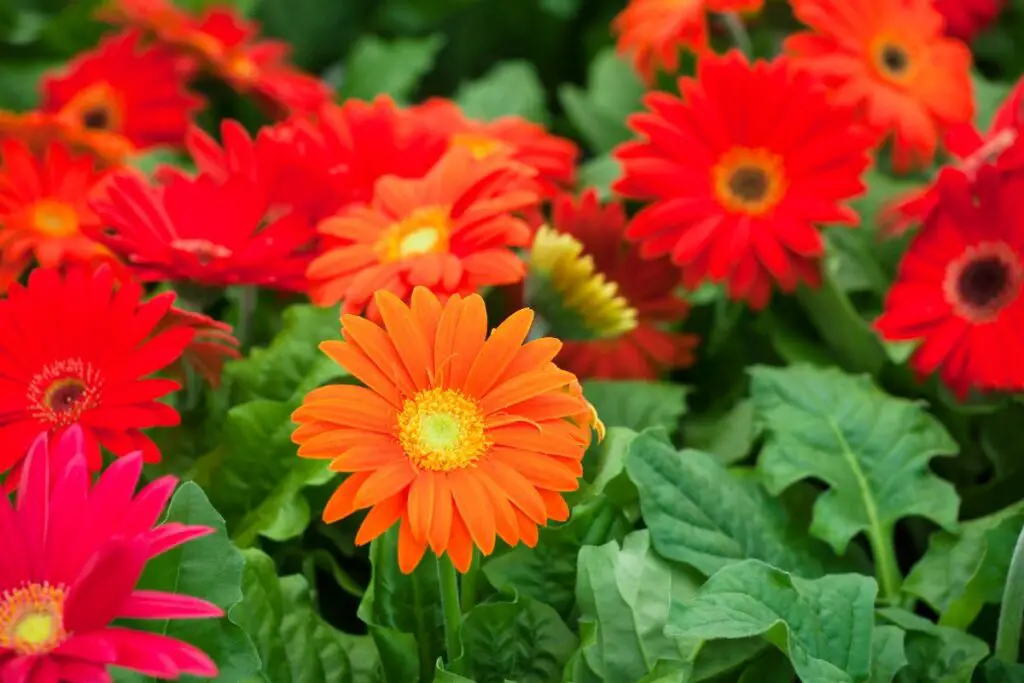Every plant is unique in its own way. From the biology and cultivation to the way we use different plants for their herbal properties and aesthetics. Plants enrich our lives in innumerable ways. Every plant also has its own needs.
Today we will look at the Gerbera Daisy (Gerbera jamesonii) and the conditions it needs to thrive in your garden.
Table of Contents
Does Gerbera Daisy Need Sun or Shade?
The gerbera daisy is a perennial plant that likes full sun but not overwhelming heat. When you live in an area with blistering summer sun they prefer morning sun with some shade in the afternoons or dappled shade throughout the day.
In their native South Africa, these plants are found in grasslands and on rocky slopes that have sandy, well-draining soil. They like warm summer days and cool nights, piña coladas, and getting caught in the rain. Ok, maybe not the piña coladas, but definitely the other three.
Even though these flowers can be finicky about cold and hot weather, they thrive in the sun. Find a nice sunny spot in your home, garden, or on your patio, and let nature do the rest.
Gerbera Daisy Full Sun
Gerbera daisies grow from 6 to 18 inches tall and can be found in containers, raised beds, and along borders. Given the right conditions, these plants produce a multitude of beautiful flowers that come in many colors and shades.
When grown indoors, keep your gerbera daisies in a bright, sunny spot near a window that lets the light in for much of the day. Keep them away from direct sunlight.
Too much direct sunlight can scorch the leaves while too much shade may inhibit growth. When grown outdoors in cooler climates, plenty of full sun allows the plant to maximize growth and help it flower to its full potential.
If you didn’t know already, gerbera daisies can be grown in pots! Check out Gerbera Daisies in Pots
Do Gerbera Daisies Need Sunshine?
Gerbera daisies are categorized as full-sun plants and they need plenty of light to grow. All those big, colorful blooms, take a lot of energy to grow and that means ample sunlight to produce the kind of plants that you are looking for.
Because they are native to South Africa, they do well in places that get lots of sunshine with temperatures that stay low, rarely reaching upper 90 or 100-degree days. In the U.S., much of California has the ideal climate for growing gerbera daisies.
Throughout spring and early summer, gerbera daisies will relish the sunlight needing very little shade. As the days warm up and afternoons reach temperatures above 80 degrees Fahrenheit, these plants must be protected from prolonged, direct sunlight.

What’s the Best Temperature For Gerbera Daisies?
Gerbera daisies can be grown indoors and outdoors with temperature fluctuations between 40-70 degrees Fahrenheit. With these conditions, they do quite well. While the root system is establishing itself, 68-70 degrees Fahrenheit is the optimal temperature for the plant.
They experience the best growth in both foliage and flower at 70 degrees Fahrenheit. Once they begin to flower, daytime temperatures of 75 degrees Fahrenheit will help them produce healthy blooms.
When growing outdoors, these flowers can be overwintered even when temperatures drop below 40 degrees. As long as temperatures don’t get too low and frost is light, covering your gerbera daisies with several inches of mulch can help to keep their roots alive over the winter months, ready to come back next spring.
Want to learn more about Gerbera Daisies and how they grow? Check out Gerbera Daisy Annual or Perennial
What Kind of Sunlight Do Gerbera Daisies Need?
Sunlight is crucial for gerbera daisies to flower. But what kind of sunlight and how much of it depends on other factors such as location, season, and climate.
Inside, these plants are comfortable and do well at room temperature. Most of our homes are not too hot or too cold for the gerbera daisy. During the winter, it will make due with indirect sunlight, especially if supplemented with artificial light.
Whether inside or outside, as long as proper watering and soil conditions are met, the amount and type of sunlight these plants receive is crucial to their well-being. As we’ve discussed, daytime high temperatures during the growing season determine light requirements.
In USDA growing zones 8-11, with a little time and effort, you should be able to find a place where these plants will do well, filling the spaces where they are planted with beauty for years to come. For the rest of us, growing them as annuals or overwintering them is well worth the time it takes.

Do Gerbera Daisies Need Shade?
When the heat of the day gets to be too much for the gerbera daisy, more shade is required. The gerbera daisy can be grown in full sun when air temperatures remain cool.
The hotter the days get, the more shade is needed. That is why many people grow them in containers that can be moved from place to place, depending on the temperature and shade needs of the gerbera daisy.
In areas where summer days often reach high temperatures, these plants will thrive in dappled sunlight. Too much shade will stunt growth and not allow the plants to bloom or to bloom very little.
Also, gerbera daisies need fertile soil to bloom well. So, before you decide they are not getting enough light make sure to fertilize them regularly during the blooming season.
Two to three times, over the growing season, it will be necessary to add a controlled-release fertilizer. Although, adding organic compost around the base of the plant, especially manure, can give your plant the nutrients it needs without the need for other fertilizers.
Want to learn more about gerberas? Check out How to Deadhead Gerbera Daisies
Final Thoughts
Gerbera daisies, sun or shade, are a joy to grow. They make your gardens, containers, and raised beds pop with extraordinary color from large flowers and beautiful foliage that seem almost surreal.
Even if you are unable to grow these plants as perennials, they are worth the time and effort to place along borders, in rock gardens, or use as a bedding plant for a large area in the front row of your home flower garden. Finding the exact right place for them may take some work, but you’ll be glad you did.

